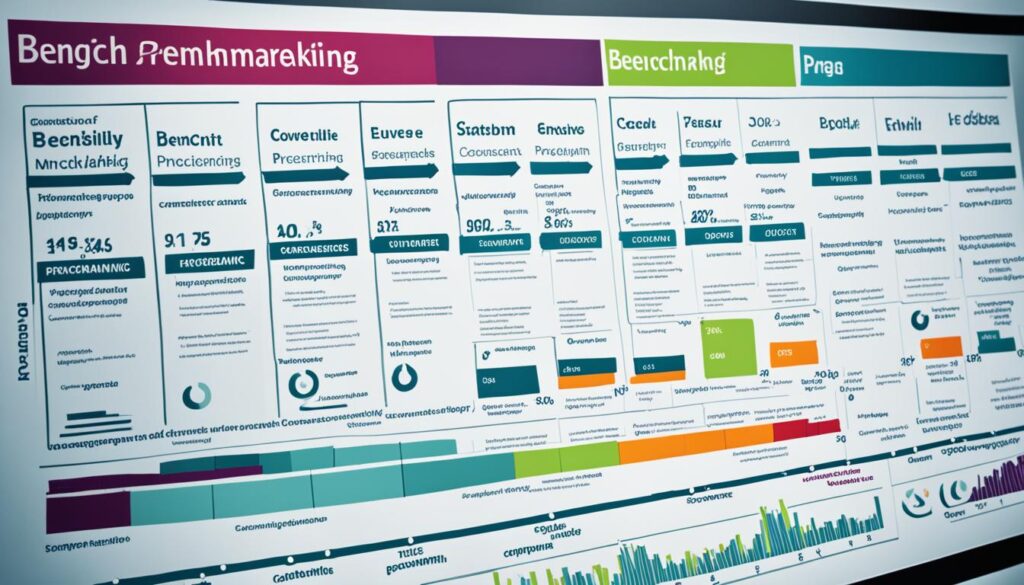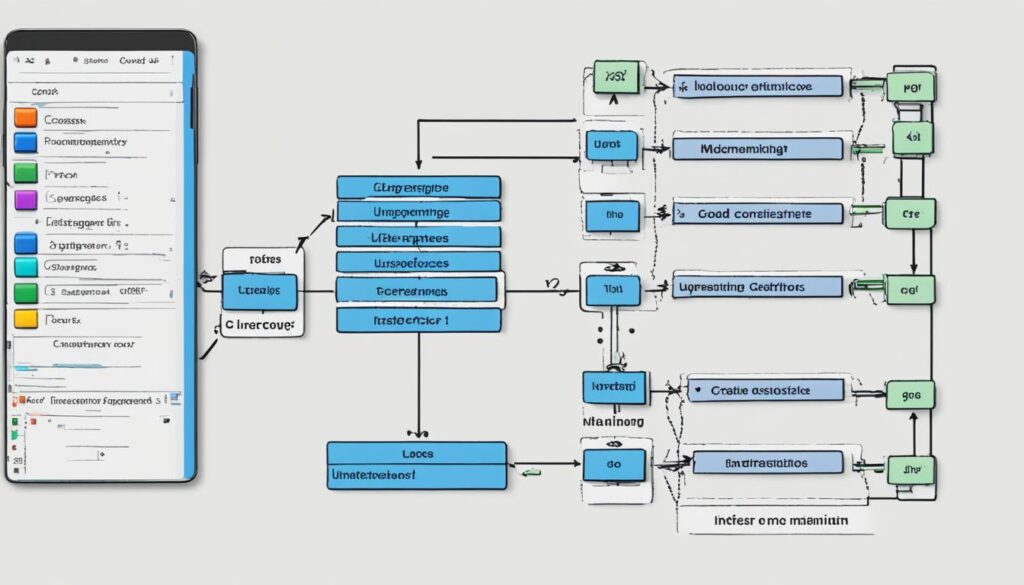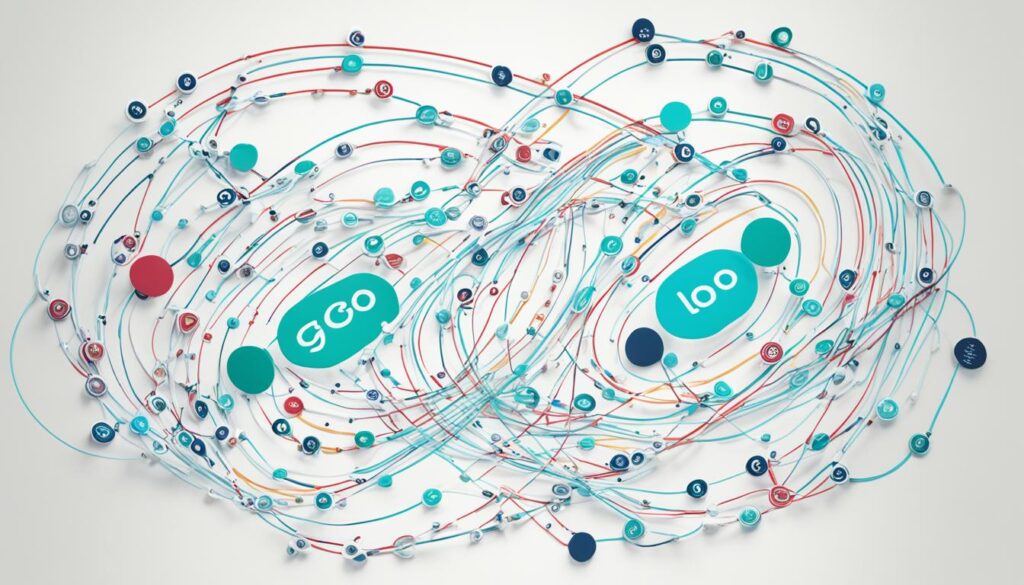The Go programming language, widely recognized for its robust features, effectively combines simplicity with impressive performance. One of the key elements that amplifies the appeal of Go is its extensive Standard Library, a well-organized collection of packages and functions designed to address a range of programming challenges. By integrating these coding tools into our projects, we can streamline our development process and enhance productivity. This article aims to illuminate the vast resources available within Go’s Library Ecosystem, helping developers harness its full potential to elevate their coding experience.
Key Takeaways
- The Standard Library in Go is comprehensive and efficient, addressing many common programming needs.
- Employing built-in tools from the Standard Library can enhance our coding efficiency.
- Understanding the Library Ecosystem is essential for optimizing our development workflows.
- The simplicity of Go aids developers in navigating its Standard Library with ease.
- We can achieve remarkable concurrency through Go’s inherent features and libraries.
Introduction to Go Programming Language
The Go language, developed by Google, represents a significant evolution in programming paradigms. Its focus on simplicity and efficiency makes it stand out among modern languages. Go is designed to facilitate rapid application development without sacrificing performance. This programming language simplifies complex coding tasks, which ultimately enhances productivity within the developer community.
One of the key Golang features is its strong support for concurrency, allowing developers to efficiently handle multiple tasks simultaneously. This capability is particularly useful in server-side development, where responsiveness and speed are critical. Unlike many other languages, Go integrates a powerful standard library that provides essential packages for tasks such as data manipulation, networking, and file handling.
As we delve deeper into Go programming, we will cover its foundational principles and how they differ from languages such as Java and Python. Understanding these distinctions clarifies why Go has gained such widespread popularity and the advantages it offers for various applications.
The Importance of the Standard Library
The standard library serves as a cornerstone in Go programming, significantly enhancing the importance of Go standard library for developers. By providing pre-built solutions to common coding challenges, we experience greater programming efficiency compared to developing everything from scratch. This built-in functionality not only saves time but also reduces errors, allowing us to focus on building innovative features rather than wrestling with foundational issues.
Another key benefit lies in the library’s contribution to package management. A robust ecosystem minimizes our reliance on external packages, which often introduce compatibility issues and security risks. Instead, the readily available packages streamline application development and ensure easy maintenance. We can concentrate on our core objectives backing our applications with reliable code.
In exploring the functionality provided by the standard library, we uncover a variety of tools that support a wide range of tasks, from handling HTTP requests to manipulating data formats. Our projects gain not only speed but also dependability. This solid foundation enables us to scale effectively while maintaining high performance under load.
To illustrate its capabilities, we can examine a few essential components within the standard library:
| Component | Functionality | Benefits |
|---|---|---|
| net/http | Build web servers and make HTTP requests | Streamlines web development |
| encoding/json | Handle JSON data encoding and decoding | Simplifies data manipulation and exchange |
| fmt | Formatted I/O operations | Makes output formatting straightforward |
By leveraging the standard library’s capabilities, we can enhance our projects effectively and maintain a strategic focus on achieving high programming efficiency. Investing in mastering this essential resource can yield substantial long-term advantages within our development endeavors. For further insights on optimizing data transfer techniques, visit this page.
Exploring Networking Capabilities
One of the standout features of Go is its exceptional networking capabilities. With the net and http packages, we can easily create scalable applications that meet a variety of needs. These packages facilitate the development of both servers and clients, making the process intuitive and efficient.
When working with Networking in Go, we have access to various functions that allow for the management of TCP and UDP connections. This flexibility empowers developers to mold their applications according to specific requirements. For instance, creating a simple web server can be done with minimal lines of code, showcasing the power and simplicity of Go’s networking solutions.
As we dive deeper into the capabilities provided by Go network packages, it’s crucial to understand the significance of built-in libraries in achieving performance and reliability. By leveraging the network functionalities, we can enhance the responsiveness and scalability of our applications considerably.
We must also consider external factors influencing technological advancements. Technologies like Artificial Intelligence and Quantum Computing are paving the way for innovations across different industries. An exploration into these trends highlights the potential for transformative solutions in our projects. For further insights into emerging trends, we can look at this resource.
| Feature | Description | Benefits |
|---|---|---|
| Go’s net Package | Facilitates building networked applications. | Ease of use, performance, and versatility. |
| Go’s http Package | Simplifies creating web servers and clients. | Rapid development, scalability, and built-in web features. |
| TCP/UDP Connection Management | Enables communication in real-time applications. | Robustness and lower latency for user interactions. |
File Handling Techniques in Go
Understanding file handling in Go is essential for effective programming. The standard library provides powerful tools through the os package, enabling us to perform various file system operations. This section will delve into techniques for reading and writing files, utilizing both the os and io packages for efficient file management.
Using the os Package
The os package in Go offers a diverse range of functionalities to interact with the operating system. From creating and removing files to obtaining file information, it facilitates the implementation of file handling in Go. By leveraging this package, we can perform essential tasks seamlessly, thus enhancing our applications’ robustness.
- Create and manage files.
- Retrieve file metadata and properties.
- Remove unwanted files or directories.
Reading and Writing Files
Reading and writing files in Go can be accomplished with simplicity using the io package combined with the os package. We can open files, read their contents into memory, and write modified data back efficiently. This flexibility allows us to handle text and binary files seamlessly.
| Operation | Description | Example Code |
|---|---|---|
| Read a File | Open a file for reading and retrieve its content. | data, err := os.ReadFile("filepath.txt") |
| Write to a File | Create or overwrite a file with new data. | os.WriteFile("filepath.txt", data, 0644) |
| Append to a File | Open a file to add data without erasing existing content. | f, _ := os.OpenFile("filepath.txt", os.O_APPEND|os.O_WRONLY, 0644) |
Concurrency Features of Go
Understanding Go concurrency is crucial for developers seeking to optimize their applications. The architecture of Go, with its lightweight goroutines and powerful channels, provides an effective way to manage concurrent tasks. This section explores how these features enhance performance, encourage efficient resource usage, and facilitate communication between functions that run simultaneously.
Understanding Goroutines
Goroutines are the cornerstone of concurrency in applications using Go. They allow us to execute functions in parallel without the overhead associated with traditional threads. By simply using the go keyword before a function call, we can create a new goroutine, allowing our applications to process multiple tasks concurrently. This ability not only improves responsiveness but also maximizes CPU utilization, especially in I/O-bound applications.
For instance, consider a scenario where we need to fetch data from multiple sources. Using goroutines, we can initiate each fetch operation independently, leading to significant reductions in overall processing time. This feature is particularly useful when optimally structuring the flow of our applications. Implementing goroutines effectively can dramatically improve user experience by minimizing wait times.
Using Channels for Communication
While goroutines enable parallel execution, channels serve as the communication bridge between them. Channels allow goroutines to send and receive data, syncing their operations seamlessly. This is vital in managing the complexities that arise from concurrent workflows. By utilizing channels, we enhance the safety and reliability of our applications, reducing the potential for race conditions and data corruption.
Moreover, channels can be buffered or unbuffered, providing flexibility in flow control based on our specific needs. With buffered channels, we can allow a certain number of messages to be sent without waiting for a receiver, optimizing throughput. Conversely, unbuffered channels ensure that send and receive operations occur simultaneously, which can be crucial for applications requiring synchronized communication.
In conclusion, mastering goroutines and channels is essential for leveraging the full potential of Go concurrency. These features not only streamline our application design but also enhance overall performance. Understanding how to implement and utilize these concepts effectively can lead to significant improvements in the performance and efficiency of our Go applications.
For those looking to delve deeper into performance optimization techniques, we recommend exploring performance tuning practices that can further enhance the efficiency of programming in Go.
Secure Applications with Cryptography
Creating secure applications demands a solid understanding of Cryptography in Go. The Go programming language provides a comprehensive crypto package that includes essential tools for implementing secure mechanisms. This package enables developers to incorporate hashing functions, encryption, and decryption methods in their applications, safeguarding sensitive data effectively.
Implementing Hashing Functions
Hashing functions play a crucial role in maintaining data integrity within secure applications. We can leverage these functions to generate a fixed-size string from input data. Go offers several built-in hashing algorithms like SHA256 and SHA512 through the crypto/sha256 and crypto/sha512 packages. By applying these hashing functions, we ensure that any data modification will result in a completely different hash output, allowing us to easily detect tampering.
Overview of Encryption and Decryption
Encryption and decryption are fundamental concepts in securing applications. The crypto package facilitates various encryption methodologies, such as symmetric and asymmetric encryption. With symmetric encryption, we can use a single key for both encryption and decryption processes, while asymmetric encryption employs a pair of keys—public and private. Our understanding of these techniques ensures that information remains confidential during transmission and storage. For more insight into the implications of deep learning and natural language processing, we can explore advanced topics in this field through further readings.
| Feature | Hashing Functions | Encryption | Decryption |
|---|---|---|---|
| Purpose | Data integrity | Data confidentiality | Data recovery |
| Key Usage | No keys | Symmetric/Asymmetric keys | Symmetric/Asymmetric keys |
| Examples | SHA256, SHA512 | AES, RSA | AES, RSA |
| Output Type | Fixed-length hash | Ciphertext | Plaintext |
Testing and Quality Assurance in Go
Validating our software through quality assurance is essential for long-term success. The Go testing framework simplifies this process, allowing us to ensure that our code meets expected standards. With Go, we can effortlessly write unit tests and benchmarks to validate our functions.
Utilizing the tools available in the testing package enhances our workflow. We can define test cases and run them efficiently to catch issues early in the development cycle. This practice helps maintain the reliability of our codebase and promotes smoother integration into larger systems.
We encourage following these essential steps when implementing testing in Go:
- Create unit tests for individual functions to ensure they behave as intended.
- Use benchmarks to measure performance and identify potential bottlenecks.
- Take advantage of Go’s built-in tools to automate test execution and reporting.
- Adopt a test-driven development (TDD) approach to build robust software.
Leveraging Common Packages in Go
The Go ecosystem stands out for its variety of common packages that cater to an array of tasks in software development. By understanding these packages, we can significantly enhance our productivity through effective package utilization. This approach streamlines the coding process, allowing us to tap into pre-built functionalities, rather than building everything from scratch.
Among the essential packages we often leverage are net/http for HTTP client and server implementations, encoding/json for data interchange formats, and log for logging. Utilizing such common packages in Go accelerates development and reduces the likelihood of errors, as they come with established best practices.
To better illustrate the effectiveness of these packages, we can evaluate a few widely used options within the Go ecosystem. Understanding their features and benefits can aid us in selecting the correct package for our projects. The following table summarizes key packages and their uses:
| Package Name | Purpose | Typical Use Cases |
|---|---|---|
| net/http | HTTP server and client implementation | Web applications, APIs |
| encoding/json | JSON encoding and decoding | Data interchange, configuration files |
| log | Logging events | Application monitoring, debugging |
| fmt | Formatted I/O operations | Outputting user-friendly messages |
| math/rand | Random number generation | Games, simulations |
By incorporating common packages in Go, we not only save time but also improve the reliability of our applications. A focus on security is crucial as well. As we utilize these packages, awareness of cybersecurity threats must be prioritized, ensuring our data remains protected through effective strategies such as those highlighted in this important article.
Building Web Servers with the HTTP Package
The HTTP package in Go provides a powerful and convenient framework for building web servers and APIs. This library simplifies the server creation process, allowing us to focus on delivering functionality rather than handling the complexities of low-level networking. By utilizing the HTTP package, we can create a strong foundation for any web application.
Setting up a web server in Go involves just a few lines of code. We can define routes, manage incoming requests, and send responses effortlessly. Using http.HandleFunc, we can associate URL paths with specific handler functions that define how our application should respond to different requests. This modular approach promotes better organization and maintainability in code structure.
Utilizing middleware enhances our web server in Go by allowing us to execute common tasks such as authentication, logging, and error handling before reaching the core request handlers. This practice ensures that our APIs can handle incoming traffic robustly, streamlining processes for users interacting with our applications.
To showcase how to effectively create a server, we can implement a simple API endpoint that responds to GET requests. The code structure below illustrates the basic setup:
package main
import (
"fmt"
"net/http"
)
func helloHandler(w http.ResponseWriter, r *http.Request) {
fmt.Fprintf(w, "Hello, World!")
}
func main() {
http.HandleFunc("/", helloHandler)
http.ListenAndServe(":8080", nil)
}This snippet shows the setup of an HTTP server that responds with a friendly message. From this starting point, we can expand our functionality, integrating complex routing and business logic for building APIs that cater to various needs.

For developers familiarizing themselves with modular designs in programming, techniques seen in languages like ABAP highlight the effectiveness of structured approaches. By embracing these principles, we can further enhance the quality and efficiency of our Go web applications. A deeper dive into such methodologies can be explored using this link.
Data Manipulation with Go Libraries
In modern software development, effective data manipulation is crucial. Go provides a suite of standard libraries designed for different data formats, enabling us to handle a variety of data types efficiently. This section delves into JSON handling, XML processing, and CSV data management, illustrating how these capabilities enhance our applications.
JSON Encoding and Decoding
JSON handling in Go is straightforward and powerful. By utilizing the encoding/json package, we can easily encode data structures into JSON format or decode JSON data into Go types. The process begins with defining our Go structures. For instance:
type Person struct {
Name string `json:"name"`
Age int `json:"age"`
}
Encoding a structure to JSON is done with the json.Marshal function, while decoding is achieved using json.Unmarshal. This straightforward approach to data manipulation in Go facilitates seamless interaction with APIs and data-driven applications.
Handling XML and CSV Data
XML processing in Go is enabled through the encoding/xml package, allowing us to decode XML data into Go structures as well. Similar to JSON, we define our structures with appropriate XML tags. For example:
type Employee struct {
XMLName xml.Name `xml:"employee"`
Name string `xml:"name"`
Role string `xml:"role"`
}
CSV data management utilizes the encoding/csv package, which provides functions for reading and writing CSV files. The structure is processed with methods such as csv.NewReader and csv.NewWriter. This enables us to handle tabular data effectively.
The following table summarizes the capabilities offered by each library:
| Data Format | Go Package | Main Functions |
|---|---|---|
| JSON | encoding/json | json.Marshal, json.Unmarshal |
| XML | encoding/xml | xml.Marshal, xml.Unmarshal |
| CSV | encoding/csv | csv.NewReader, csv.NewWriter |
These libraries empower developers to perform data manipulation in Go efficiently, streamlining workflows and enhancing the functionality of our applications.
Using the Container Package for Data Structures
The container package in Go provides essential data structures that streamline our programming tasks. Within this package, we can utilize various types of data structures such as lists, rings, and heaps, each designed to enhance our handling of collections. Understanding these structures offers us practical solutions for data management in Go applications.
Here are some notable data structures available through the container package in Go:
- List: A doubly linked list that allows us to efficiently insert and remove elements.
- Ring: A circular list that provides a flexible way to traverse elements in a loop.
- Heap: A priority queue implementation that supports quick access to the minimum (or maximum) element.
Each of these Go collections serves a specific purpose, making our coding experience smoother and more efficient. By selecting appropriate data structures, we can optimize performance and maintainability in our applications.
| Data Structure | Description | Use Case |
|---|---|---|
| List | Doubly linked list for dynamic element management. | Situations requiring frequent insertions/deletions. |
| Ring | Circular structure for continuous traversal of elements. | Use cases needing round-robin scheduling. |
| Heap | Efficient priority queue for managing ordered data. | Implementing algorithms that rely on sorted data. |
Effective Error Handling in Go
In programming, effective error handling is vital for creating robust software. In Go, error handling is approached through some unique practices, making Go error management both straightforward and powerful. The language employs a mechanism that emphasizes explicit error checking, which enhances the reliability of our applications.
When we write Go programs, every function that may encounter an error returns an error value. This design encourages us to actively manage errors rather than overlooking them. To illustrate, here’s a simplified example:
result, err := someFunction()
if err != nil {
// Handle the error
}This snippet demonstrates how we can check for errors immediately after a function call, allowing us to implement necessary logic for error recovery. Such direct error handling contributes to building reliable applications.
Let’s examine a simple contrast in error handling across programming languages:
| Language | Error Handling Method |
|---|---|
| Go | Explicit error returns, encouraging proactive management. |
| Java | Try-catch blocks that can obscure error sources. |
| Python | Exceptions that require extensive handling strategies. |
By utilizing these practices in Go, we foster a culture of vigilance around errors, leading to better application integrity. In our experience, consistently applying error handling in Go not only improves our development process but also boosts the overall user experience.

Using Go’s Standard Library for Performance Optimization
Utilizing Go’s standard library features enables us to achieve remarkable performance optimization in Go applications. By leveraging built-in packages, we can enhance our coding efficiency and streamline various processes. This approach often leads to improved memory management, faster execution times, and a more robust application overall.
One of the fundamental aspects of performance optimization is selecting the right packages for specific tasks. For instance, packages like net/http and encoding/json offer optimized implementations that can handle large volumes of data with minimal overhead. Identifying these standard library features allows us to write efficient coding practices that naturally integrate performance enhancements.
Below is a table highlighting several key standard library features alongside their impact on performance optimization:
| Library Package | Purpose | Performance Benefit |
|---|---|---|
| net/http | Building web servers | Efficient handling of concurrent requests |
| encoding/json | JSON parsing and encoding | Optimized memory allocation for large datasets |
| os | File system operations | Reduced latency in file access |
| context | Managing cancellation and timeouts | Efficient resource management during long operations |
Incorporating these features into our projects will not only enhance functionality but also ensure that we are engaging in effective performance optimization in Go. Embracing these efficient coding techniques positions us to build scalable and high-performing applications seamlessly.
Real-World Applications of Go’s Standard Library
Utilizing the Go standard library leads us to a multitude of practical programming opportunities. Companies across different sectors have successfully implemented these capabilities to create robust applications. For instance, the powerful networking features allow developers to build high-performance web servers and APIs, demonstrating real-world Go applications in the digital landscape.
Many developers leverage Go’s various packages for effective file handling and data management. These Go standard library use cases play a significant role in applications where data integrity and speed are paramount. A notable example is the use of the json package for efficient data encoding and decoding, providing seamless interaction with databases and external services.
To illustrate the impact of the standard library, we’ve compiled a table showcasing several successful applications and the libraries utilized:
| Application | Library Used | Description |
|---|---|---|
| Dropbox | net/http | Robust API and file synchronization services. |
| SoundCloud | database/sql | Efficient database connectivity and query execution. |
| Uber | encoding/json | Real-time data processing and user data management. |
| Docker | os | File manipulation and environment management. |
These examples highlight the versatility and impact of the Go standard library in crafting effective solutions. By understanding and applying these libraries, we gain access to a powerful toolkit, fostering innovation in our real-world Go applications.
Conclusion
In summary, the Go standard library is a powerhouse of functionality that empowers us to create robust and efficient applications. We have thoroughly explored the various facets of this library, emphasizing its standard library importance in enhancing our development experience. With a wealth of built-in features, the Go programming language enables us to streamline our workflows and tackle complex tasks with ease.
By understanding and utilizing the standard library effectively, we can unlock the full potential of Go programming, paving the way for innovative solutions. The integration of various developer tools not only simplifies our coding journey but also enhances our ability to build high-performance applications.
As we move forward, let us continue to leverage the comprehensive capabilities of the Go standard library. For a deeper insight on system implementation and configuration, we can explore best practices and strategies to ensure we remain at the forefront of this dynamic programming landscape.
FAQ
What is the Go programming language, and what are its main features?
The Go programming language, also known as Golang, was introduced by Google and emphasizes simplicity, efficiency, and exceptional concurrency capabilities. Some main features include a robust standard library, strong support for networked applications, and built-in tools for concurrency management.
Why is the Go standard library significant for developers?
The Go standard library provides a suite of well-maintained packages and functions that address common coding challenges, which boosts programming efficiency and allows for streamlined application development. This reduces the need for external packages and enhances maintainability.
How does Go handle networking?
Go’s standard library includes the `net` and `http` packages, which enable the easy creation of scalable networked applications. Through these packages, developers can manage TCP and UDP connections, build web servers, and simplify the overall process of web development.
What tools does Go offer for file handling?
Go provides extensive file handling capabilities through its `os` and `io` packages. These tools facilitate seamless interactions with the file system, including techniques for reading, writing, and manipulating files and directories effectively.
Can you explain how concurrency works in Go?
Go supports concurrency through the use of goroutines and channels. Goroutines allow us to run functions concurrently, while channels facilitate communication between these functions. This makes it easier to optimize resource usage and enhance performance in applications.
How can we secure applications using Go’s standard library?
The Go standard library includes cryptographic packages that offer hashing functions, encryption, and decryption capabilities. Utilizing the `crypto` package is crucial for implementing secure data protection and communication practices in our applications.
What is the role of testing in Go development?
Go simplifies quality assurance by providing a dedicated testing framework. Developers can write unit tests and benchmarks using the `testing` package, ensuring the reliability and maintainability of the codebase throughout the development process.
What are common packages in Go, and how do they assist developers?
Common packages in Go can expedite the development process by offering pre-built functionalities tailored to various use cases, such as web development and data manipulation. These packages allow developers to save time and effort by leveraging existing solutions.
How does the HTTP package in Go contribute to web development?
The HTTP package in Go significantly simplifies building web servers and APIs. It allows developers to set up web services, manage requests and responses, and implement routing and middleware, which helps in creating robust and performance-oriented web applications.
How can data be manipulated using Go libraries?
Go’s standard libraries provide tools for encoding and decoding JSON, as well as processing XML and CSV data. These libraries are essential for data manipulation in applications, enabling seamless and efficient handling of various data formats.
What data structures can be found in Go’s container package?
Go’s container package includes various data structures such as lists, rings, and heaps. These structures simplify programming tasks by providing efficient tools to manage collections of data.
How does Go handle errors?
Go employs a unique approach to error handling, emphasizing explicit error-checking logic. This helps developers create robust applications by effectively managing errors throughout the coding process.
What optimization techniques can be applied using Go’s standard library?
We can leverage Go’s standard library for performance optimization by implementing efficient memory management and streamlining processes, ultimately improving overall application performance with practical examples.
Can you provide examples of real-world applications using Go’s standard library?
Many companies and developers utilize Go’s standard library to build successful applications, taking advantage of its robust features to optimize performance and reliability. Case studies often showcase how these built-in tools solve real-world programming challenges effectively.

















